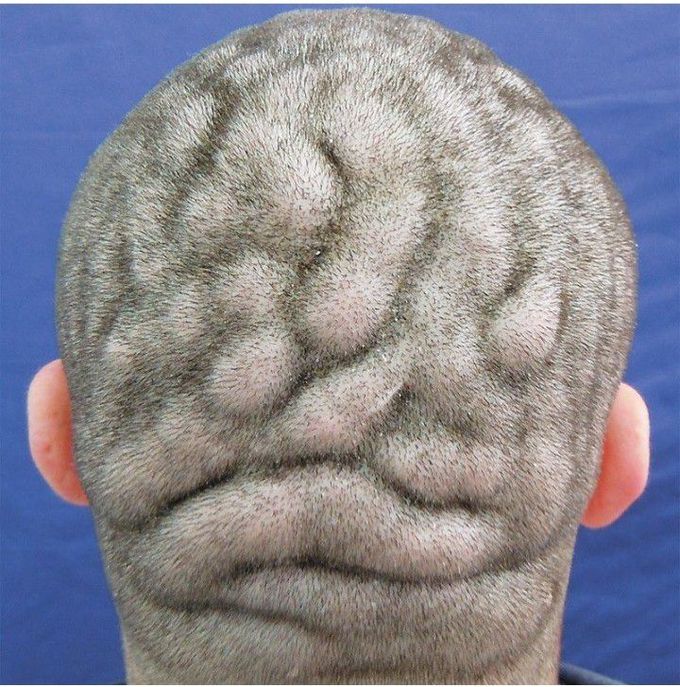


Scalp disease.....
A 21 -year-old man presented with scalp changes that had begun 2 years earlier. Physical examination revealed excessive growth of the scalp, with the formation of convoluted folds and furrows in a cerebriform pattern. The patient had intellectual impairment, although he had no symptoms of neurologic or psychiatric disorders. A 4-mm punch-biopsy specimen from the scalp revealed no inflammatory or neoplastic changes. This clinical presentation was consistent with a diagnosis of cutis verticis gyrata, which is an unusual morphologic condition ofthe scalp characterized by ridges and furrows resembling the brain's surface. No intervention was attempted because the patient had no associated disorders and the condition did not bother him cosmetically. At the 1-year follow-up, there were no changes in the patient's presentation.
Cutis verticis Gyrata. It can be improved by skin reduction temporary



